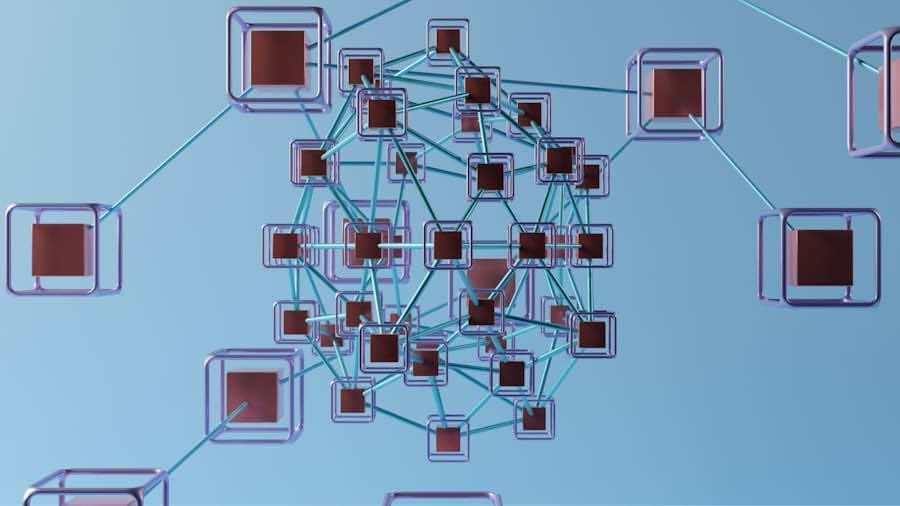In an era where cyber threats are increasingly sophisticated and pervasive, the traditional perimeter-based security model is becoming obsolete. The rise of remote work, cloud computing, and mobile devices has blurred the lines of organisational boundaries, making it imperative for enterprises to rethink their security strategies. Zero-Trust Architecture (ZTA) emerges as a robust framework designed to address these challenges by fundamentally altering the way organisations approach security.
The core tenet of ZTA is the principle of “never trust, always verify,” which posits that no user or device should be trusted by default, regardless of whether they are inside or outside the network perimeter. Zero-Trust Architecture is not merely a technology or a product; it is a comprehensive security strategy that encompasses people, processes, and technology. It requires organisations to continuously authenticate and authorise every user and device attempting to access resources within the network.
This paradigm shift necessitates a cultural change within organisations, as it challenges long-standing assumptions about trust and access. By adopting ZTA, enterprises can significantly reduce their attack surface and enhance their overall security posture, making it a critical consideration in today’s digital landscape.
Summary
- Zero-Trust Architecture is a security concept that assumes all networks are potentially compromised and requires strict identity verification for every person and device trying to access resources.
- The principles of Zero-Trust Architecture include least privilege access, micro-segmentation, continuous monitoring, and strict access controls.
- Implementing Zero-Trust Architecture in enterprises involves assessing current security posture, defining access policies, implementing security controls, and monitoring and adjusting the architecture as needed.
- The benefits of Zero-Trust Architecture for enterprises include improved security posture, reduced risk of data breaches, better visibility and control over network traffic, and compliance with data protection regulations.
- Challenges of adopting Zero-Trust Architecture include complexity of implementation, resistance to change, and the need for ongoing investment in security technologies and training.
The Principles of Zero-Trust Architecture
At the heart of Zero-Trust Architecture lie several foundational principles that guide its implementation. The first principle is the concept of least privilege access. This principle dictates that users should only have access to the resources necessary for their specific roles and responsibilities.
By limiting access rights, organisations can mitigate the risk of insider threats and reduce the potential damage caused by compromised accounts. For instance, if an employee in the finance department only requires access to financial applications, they should not have permissions to access sensitive data in other departments, such as human resources or IT. Another key principle of ZTA is continuous monitoring and validation.
Unlike traditional security models that often rely on one-time authentication at the point of entry, Zero-Trust Architecture mandates ongoing verification of user identities and device health throughout the session. This involves employing advanced analytics and machine learning algorithms to detect anomalies in user behaviour or device configurations. For example, if a user typically accesses the network from a specific location but suddenly attempts to log in from a different country, the system can trigger additional authentication measures or even deny access until further verification is completed.
Implementing Zero-Trust Architecture in Enterprises

The implementation of Zero-Trust Architecture requires a strategic approach that encompasses various stages, beginning with a thorough assessment of existing security measures. Enterprises must conduct a comprehensive inventory of their assets, including applications, data, and devices, to understand their current security posture. This assessment should also identify potential vulnerabilities and areas where trust assumptions may exist.
By mapping out these elements, organisations can develop a clear roadmap for transitioning to a Zero-Trust model. Once the assessment is complete, organisations can begin to implement the necessary technologies and processes to support ZTThis often involves deploying identity and access management (IAM) solutions that facilitate granular control over user permissions. Multi-factor authentication (MFA) is another critical component, as it adds an additional layer of security by requiring users to provide multiple forms of verification before gaining access.
Furthermore, organisations should invest in network segmentation to isolate sensitive data and applications from less secure areas of the network. This segmentation not only limits lateral movement within the network but also enhances visibility into user activity and potential threats.
Benefits of Zero-Trust Architecture for Enterprises
The adoption of Zero-Trust Architecture offers numerous benefits for enterprises seeking to bolster their cybersecurity defences. One of the most significant advantages is enhanced security against data breaches. By enforcing strict access controls and continuously monitoring user behaviour, organisations can significantly reduce the likelihood of unauthorised access to sensitive information.
This proactive approach not only protects valuable data but also helps maintain compliance with regulatory requirements such as GDPR or HIPAA, which mandate stringent data protection measures. In addition to improved security, ZTA can lead to increased operational efficiency. Traditional security models often result in cumbersome processes that hinder productivity due to excessive access controls or lengthy authentication procedures.
In contrast, Zero-Trust Architecture streamlines these processes by automating identity verification and access management through advanced technologies such as artificial intelligence and machine learning. As a result, employees can access the resources they need more quickly while maintaining robust security protocols.
Challenges of Adopting Zero-Trust Architecture
Despite its numerous advantages, the transition to Zero-Trust Architecture is not without its challenges. One significant hurdle is the complexity involved in implementing such a comprehensive security framework. Many organisations have legacy systems and disparate technologies that may not easily integrate with ZTA principles.
This fragmentation can lead to difficulties in establishing a unified security posture across the enterprise, necessitating careful planning and resource allocation. Another challenge lies in fostering a cultural shift within the organisation. Employees accustomed to traditional security models may resist changes that require them to adapt their behaviours or undergo additional authentication steps.
To overcome this resistance, organisations must invest in training and awareness programmes that emphasise the importance of cybersecurity and the rationale behind ZTA principles. By fostering a culture of security awareness, enterprises can encourage employees to embrace new practices and understand their role in safeguarding organisational assets.
Best Practices for Zero-Trust Architecture Implementation

To successfully implement Zero-Trust Architecture, organisations should adhere to several best practices that facilitate a smooth transition while maximising security benefits. First and foremost, it is essential to establish a clear governance framework that outlines roles and responsibilities related to ZTA implementation. This framework should include input from various stakeholders across the organisation, including IT, security, compliance, and business units, ensuring that all perspectives are considered.
Another best practice involves leveraging automation wherever possible. Automating identity verification processes and access controls can significantly reduce the administrative burden on IT teams while enhancing security measures. For instance, implementing automated workflows for onboarding new employees can streamline access provisioning while ensuring that permissions are granted based on predefined policies aligned with least privilege principles.
Additionally, regular audits and assessments should be conducted to evaluate the effectiveness of ZTA measures and identify areas for improvement.
Case Studies of Successful Zero-Trust Architecture Implementation
Several enterprises have successfully adopted Zero-Trust Architecture, demonstrating its effectiveness in enhancing cybersecurity resilience. One notable example is Google’s BeyondCorp initiative, which redefined how employees access corporate applications without relying on traditional VPNs or network perimeters. By implementing ZTA principles, Google enabled its workforce to securely access resources from any location while maintaining strict access controls based on user identity and device health.
Another compelling case study is that of Microsoft, which has integrated Zero-Trust principles into its Azure cloud services. By leveraging advanced identity protection features such as conditional access policies and risk-based authentication, Microsoft has created a secure environment for its customers while allowing them to adopt ZTA within their own organisations. These case studies illustrate how leading technology companies have embraced Zero-Trust Architecture as a means to enhance security while enabling flexibility and productivity.
The Future of Zero-Trust Architecture for Enterprises
As cyber threats continue to evolve and become more sophisticated, the future of Zero-Trust Architecture appears promising for enterprises seeking robust security solutions. The increasing adoption of cloud services and remote work arrangements will likely drive further interest in ZTA as organisations recognise the need for adaptive security measures that extend beyond traditional perimeters. Moreover, advancements in artificial intelligence and machine learning will enhance the capabilities of ZTA by enabling more accurate threat detection and response mechanisms.
In addition to technological advancements, regulatory pressures will also play a significant role in shaping the future of Zero-Trust Architecture. As governments around the world implement stricter data protection regulations, organisations will be compelled to adopt more rigorous security frameworks like ZTA to ensure compliance while safeguarding sensitive information. Ultimately, as enterprises navigate an increasingly complex digital landscape, Zero-Trust Architecture will remain a cornerstone of effective cybersecurity strategies aimed at protecting against emerging threats while enabling business agility.
Zero-Trust Architecture for Enterprises is a crucial concept in today’s digital landscape. It involves verifying every user and device trying to access a network, regardless of their location. This approach ensures maximum security and minimises the risk of cyber attacks. For small businesses looking to implement this strategy, Top Tips for Starting a Small Business provides valuable insights on how to establish a strong foundation. Additionally, segmentation, as discussed in this marketing case study, can be applied to enhance the effectiveness of zero-trust architecture. Understanding the cost implications, such as those outlined in Costing Aircraft Components, is also essential for successful implementation.
FAQs
What is Zero-Trust Architecture for Enterprises?
Zero-Trust Architecture is a security concept that assumes no user or system within a network is trustworthy by default, even if they are inside the corporate network. It requires strict identity verification for every person and device trying to access resources on a private network, regardless of whether they are sitting within or outside of the network perimeter.
How does Zero-Trust Architecture work?
Zero-Trust Architecture works by continuously verifying the identity of every person and device trying to access resources on a network. It uses a variety of security measures such as multi-factor authentication, micro-segmentation, and least privilege access to ensure that only authorized users and devices can access specific resources.
What are the benefits of Zero-Trust Architecture for Enterprises?
Some of the benefits of Zero-Trust Architecture for enterprises include improved security posture, reduced risk of data breaches, better protection for sensitive data, and enhanced visibility and control over network traffic. It also helps organizations comply with regulatory requirements and standards.
Is Zero-Trust Architecture suitable for all types of enterprises?
Yes, Zero-Trust Architecture is suitable for all types of enterprises, regardless of their size or industry. It is particularly beneficial for organizations that handle sensitive data, have a large number of remote workers, or need to comply with strict regulatory requirements.
What are the key components of Zero-Trust Architecture?
The key components of Zero-Trust Architecture include identity and access management, network segmentation, continuous monitoring and analytics, encryption, and policy enforcement. These components work together to create a secure and resilient network environment.
